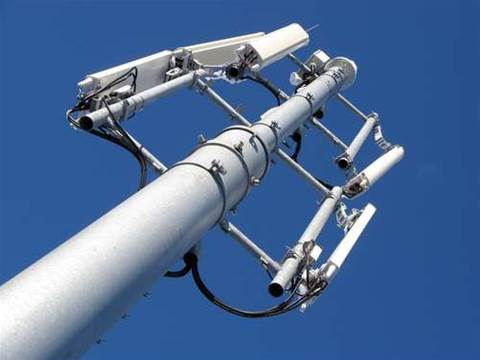A wireless National Broadband Network proposal aired late yesterday [pdf] called for the expedited release of 4G spectrum by regulators as well as access to Telstra backhaul and mobile towers to cut out further costs.
A coalition of dark fibre owners and ISP chiefs from Pipe Networks, BigAir, Vocus, AAPT and others issued the manifesto under the guise of the Alliance for Affordable Broadband.
The Alliance sought to take advantage of the uncertain future of the NBN in its current form and proposed changes it claimed could cut the network cost to as low as $3 billion.
Its plan relied on the creation of a national fibre backhaul network and a "ubiquitous" wholesale 4G network to provide broadband speeds of "up to 100 Mbps" to most Australians.
And it would be funded in a private/public partnership arrangement, according to the document.
BigAir chief executive Jason Ashton told iTnews the proposed backhaul network "could be partially funded with private money and - where it's uneconomic - the Government would chip in."
"The alternative that should be explored first up is to cut a deal with Telstra to get wholesale access to their backhaul infrastructure to both avoid the delay and also avoid the costs if they will come to the table," Ashton said.
He also disputed suggestions that the 4G proposal could delay the rollout of high-speed internet to Australians until at least 2014.
Fourth-generation wireless services using Long Term Evolution (LTE) required spectrum allocation in the 2.5 GHz and/or 700 MHz bands.
The Government in June announced that it would release a block of spectrum between 694 and 820 MHz that would be freed up by the analogue to digital television switchover at the end of 2013.
It was unclear when it would do the same for spectrum in the 2.5 GHz band.
The Alliance for Affordable Broadband essentially wanted the Australian Communications and Media Authority (ACMA) to fast-track its release of spectrum to ensure 4G services could be rolled out sooner.
"The ACMA can accelerate the clearing of the 2.5 GHz and 700 MHz bands with a focus on regional and rural areas that are in need of broadband services first," Ashton said.
"Alternatively some spectrum is already available now (Austar) and a deal could be done to access this spectrum."
Pay TV provider Austar held 98 MHz of contiguous spectrum in the 2.3 GHz band and 65 MHz in the 3.4-5GHz band [pdf].
Deployments of WiMAX - an alternate 4G technology - were being targeted commonly in the 2.3 GHz, 2.5 GHz and 3.5 GHz spectrum bands.
Austar had previously attempted to sell some of its spectrum licenses to the Optus-Elders (OPEL) consortium tasked with building a broadband network that was dumped by Labor for its NBN.
The spectrum was to be sold for $65 million in 2008.
Ashton said the alliance had not formally pitched its idea to either side of government or the four independents with whom negotiations to form a government were continuing.
The plan had not been formally costed although the alliance's manifesto said the cost could be "$3 billion or less with a large part of this driven by private investment."
Ashton proposed that the plan be costed by "industry experts that have real world experience deploying fibre-optic networks and wireless networks, not just academics."
He did not respond to questions of whether or not members of the alliance stood ready to form a consortium and fund the proposed network.
Tower trouble?
The Coalition's $6 billion broadband policy, revealed prior to last month's election, was criticised because it could rely on the rollout of more mobile towers to facilitate the peak internet speeds it promised.
Ashton didn't believe the alliance's plan would face delays from 'NIMBY-ism' - the Not In My Back Yard syndrome that had accompanied some rollouts of mobile networks in the past.
He said the new network would "co-locate on all the existing towers -- Telstra alone has 10,000+ -- using the Low Impact provisions of the Telecommunications Act."
"The total number of towers is not expected to change materially in residential areas," he said.
"We will only be building new towers in areas that are not currently serviced by mobile networks which are largely rural and regional and we will not likely have any objection to getting planning permits given the benefits that will be derived."












.jpg&w=100&c=1&s=0)
_(8).jpg&w=100&c=1&s=0)









